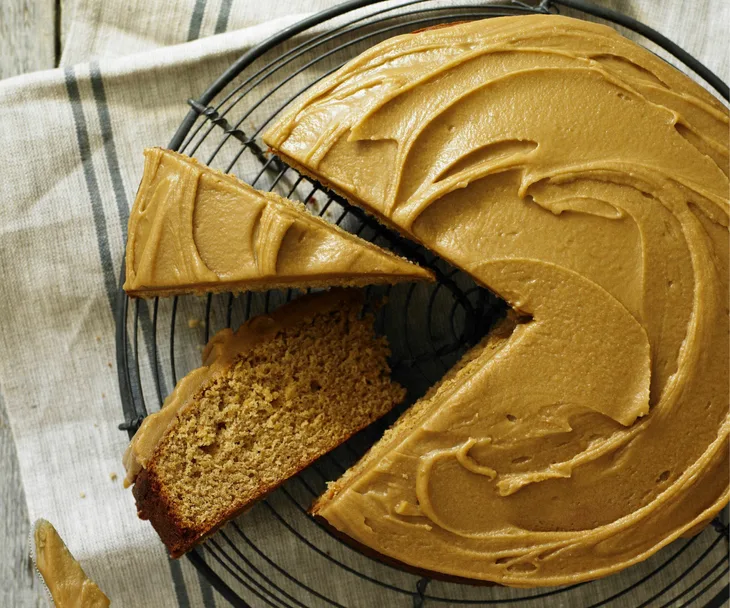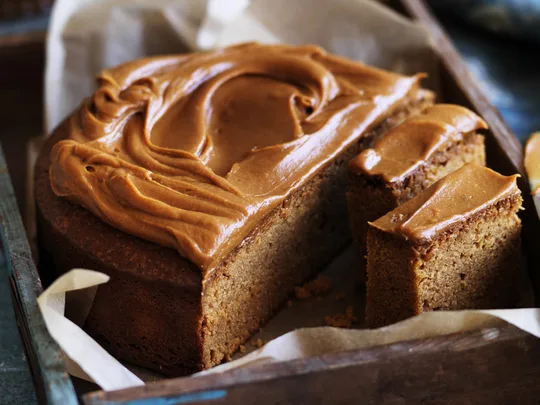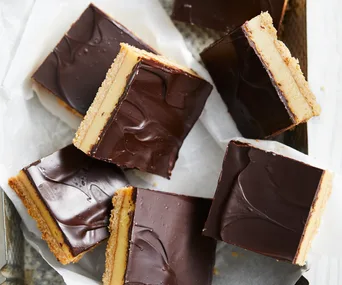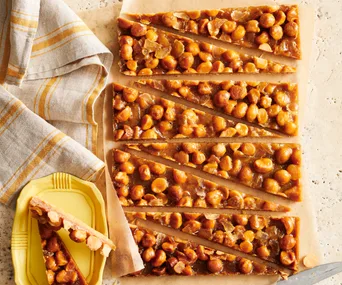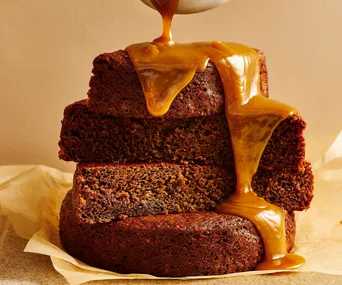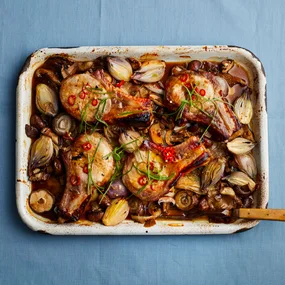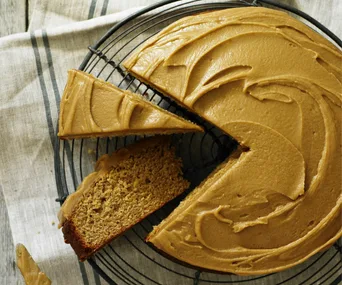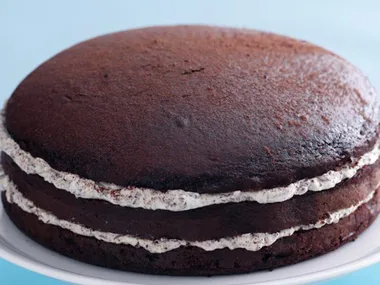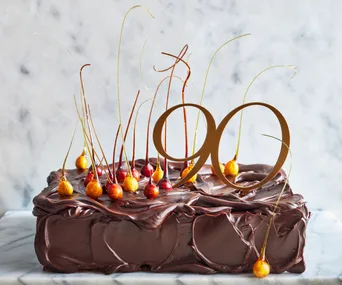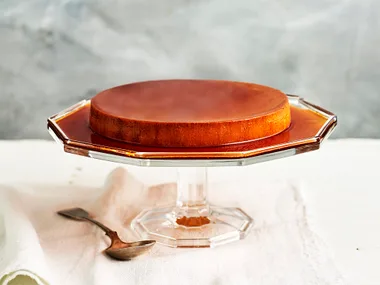
The two ways to make caramel
There are two ways to make caramel: the wet method with water and sugar, and the dry method without water. Each has its benefits. For the wet method, you’re simply waiting for the water to evaporate and the sugar to caramelise, and therefore you have more time to get things right. You also need to ensure all the sugar is dissolved before the mixture boils.
The dry method without water is faster and less likely to cause the sugar to crystallise; however, it requires precise temperature regulation and is a little trickier to master, since the sugar can caramelise very quickly or unevenly. If you are new to caramel-making, we suggest that you master the wet method first before trying the dry method.
Wet method: Sugar and water
¾ cup (165g) caster sugar
½ cup (125ml) water
Pour the sugar into the centre of a medium heavy-based saucepan and pour the water over to cover. Place the pan over low heat, then using a wooden spoon, move it around in strokes, like you would if painting, without boiling, until the sugar dissolves. Using this motion will avoid unnecessary flicking of sugar crystals around the side of the pan, which can result in the mixture crystallising later.
Only once the sugar is dissolved should the heat be raised and the mixture allowed to boil. If you find the mixture is getting too hot before the sugar dissolves, reduce the heat immediately. Once the sugar dissolves, but before boiling point, stop stirring and don’t stir again. The syrup will first thicken and become more viscous then start to colour. This is the point at which you need to be super attentive. The syrup may initially colour unevenly. To rectify this, with the pan on the heat, gently swirl to even out the colour until almost a deep caramel colour. Keep in mind that once the caramel starts to colour the change is rapid, and it will continue to colour off the heat. Remove from heat and allow bubbles to subside. Make sure you read all our other extra tips below before you start cooking.
Dry method: Sugar alone
1½ cups (330g) caster sugar

Scatter ½ cup (110g) of the sugar evenly across the base of a large, deep heavy-based frying pan. Place pan over medium-high heat and watch the sugar carefully. Using a wooden spoon, move it around in strokes like you would if painting. This will avoid flicking sugar crystals around the edge of the pan, which may remain undissolved and cause the sugar to crystallise when drawn into the pan later. Continue moving the sugar in strokes to make sure the bottom doesn’t burn before the top has melted and wait about 2 minutes without stirring or until the caramel starts to turn golden.

Add another ½ cup (110g) sugar and stir to melt in and wait without stirring 2 minutes or until it turns runny. Add remaining ½ cup (110g) sugar, stir it in, then continue cooking until the sugar has completely melted and turned dark golden (2-3 minutes). Watch it carefully (the caramel can burn very quickly), cooking until the surface just starts to foam (30 seconds to 1 minute). Turn off the heat.
Safety
- Take great care when making caramel. As it reaches a high temperature, significantly hotter than boiling water, if it touches the skin it will cause nasty burns.
- Wear long-sleeved clothing and take care to stand back when adding additional ingredients, as these will immediately cause the caramel to splutter violently.
- To reduce spluttering, add ingredients gradually. Warm any liquids, such as cream or orange juice, to reduce spluttering. However, do not melt butter as this combines best when added chilled.
- No matter how delicious hot caramel looks, never be tempted to dip a finger into it or taste test it from a spoon, as the heat will scald.
- Caramel holds heat for a long time and will transfer heat if poured into another vessel, so you will need to use oven mitts when handling.
- Should you burn yourself, place the injured skin under cool running water for 20 minutes before seeking first aid.

Tips
- Use a light-coloured pan if possible, as it will be much easier to gauge the depth of caramel colour. Also ensure that the pan is sufficiently large and deep, as the caramel will start to bubble and spit if you are adding additional ingredients to form a sauce.
- Have all the ingredients weighed out and ready to go before you start. Once the sugar begins to caramelise, your attention will need to be on the caramel.
- Ensuring the sugar is dissolved is one of the most important considerations when making caramel, as even a few undissolved sugar crystals will cause it to crystallise. Use a clean pastry brush dipped in water to brush around the inside of the pan to melt any undissolved sugar crystals stuck here.
- Another method to prevent crystallisation when using the wet method for making caramel is to stir at the start without boiling until the sugar dissolves, then cover with a lid and raise the heat until boiling, then remove the lid. The steam created will drive any undissolved sugar crystals down the side of the pan into the syrup.
- Yet another way to inhibit crystallisation when using the wet method, is to add an acid to the sugar and water. You can add either 1 teaspoon lemon juice or an 1/8 teaspoon cream of tartar (powdered tartaric acid available from the baking section of supermarkets).
- Always use a wooden spoon to stir the sugar, as some spatulas can melt into the hot caramel. And if you happen to have one, a wooden spatula with its wider surface area is great.
How many parts sugar and water to make caramel?
Caramel can be made without water; see the dry method above for details on how.
For the wet method of making caramel, with water and sugar, in theory, you can start with an enormous amount of water and only a small amount of sugar; however, you will be waiting an eternity for the water to evaporate. The only purpose of adding water to the sugar is to assist in dissolving the caramel, and since it will evaporate, the quantity of water does not add volume to the caramel. Conversely, if you add too little water, it can be tricky to dissolve the sugar and you risk flicking it around the edge of the pan and causing crystallisation later.
A good ratio is 1:1/2. For every cup of sugar (220g) use ½ cup (60ml) water.
How dark should caramel be?
The key thing when making caramel is to take the sugar syrup far enough that it takes on an amber colour. The slight bitterness offsets the sugar and delivers the rich caramel taste you are after. If the caramel is too pale it will simply taste sweet, and if it is too dark it will be bitter.
How do I stop my caramel cooking?
If your caramel is the perfect colour on the heat, the chances are it has gone too far as it will continue to darken. To stop it, place the saucepan in a sink with enough cold water to come one-third of the way up the side of the pan to cool it rapidly.

Different uses
From quick sauces to garnishes and pralines, it will come as no surprise that caramel is a delicious springboard to other sweet concoctions. Adding other complimentary ingredients (cream, butter, salt, coffee, chocolate, orange juice, orange, coffee or hazelnut liqueur) will keep it in a liquid state and temper the sweetness for a variety of sauce flavours. Here are some of our favourite ways to turn a caramel sauce into a drizzle for cakes or a topping for ice-cream.
Salted caramel sauce
Follow instructions for either the wet or dry caramel method above. At the end, stir in 1 cup (250ml) warmed pouring cream, 50g cold diced butter and 1 teaspoon salt flakes until combined. (Makes 1¾ cups).
Chocolate caramel sauce
Follow instructions for either the wet or dry caramel method above. At the end, stir in 1 cup (250ml) warmed pouring cream, 50g cold diced butter, a pinch of salt and 100g coarsely chopped dark chocolate (45%). (Makes 2 cups).
Peanut butter caramel sauce
Follow instructions for either the wet or dry caramel method above. At the end, stir in 1 cup (250ml) warmed pouring cream, 50g cold diced butter, a pinch of salt and ½ cup (140g) smooth peanut butter. (Makes 2 cups).
How to create toffee shards or praline
Toffee shards You can set caramel on a baking-paper-lined oven tray. For abstract shapes, drizzle caramel over the prepared tray, or for caramel shards, pour and tilt the tray to spread it more evenly. Stand until set. Snap cooled toffee sheets into shards and use to garnish desserts. If you are not using immediately, store in an airtight container between baking paper.
Praline To turn caramel into praline, have ¾ cup roasted nuts of choice spread on a baking-paper-lined oven tray. Pour hot caramel over nuts to cover. If necessary, lightly shake or tilt the tray to distribute the caramel through the nuts. Set aside until cooled completed. Snap praline into pieces with your hands. For thicker sheets of praline, chop with a sturdy knife. Use to decorate desserts such as this chocolate tart, or elevate your tiramisu game with this special version.
Praline powder For a praline powder, which can be used to flavour and add texture to whipped cream or a ganache, pulse broken or chopped pieces of praline in a food processor to a coarse powder. Praline powder can also be pressed around the outside of a cream- or ganache-covered cake for a glittery finish. Store praline powder in an airtight container.
How to clean up after making caramel
After you’ve made caramel, the chances are the remnants will have set rock hard in your pan and on utensils. The best way to remove cooked-on caramel is simply to add hot water to the pan to cover and to place any caramel-covered utensils in the hot water too. Heat over low-medium heat until the water simmers, breaking down and dissolving the caramel, then rinse away and wash up as normal.
Caramel recipes to try
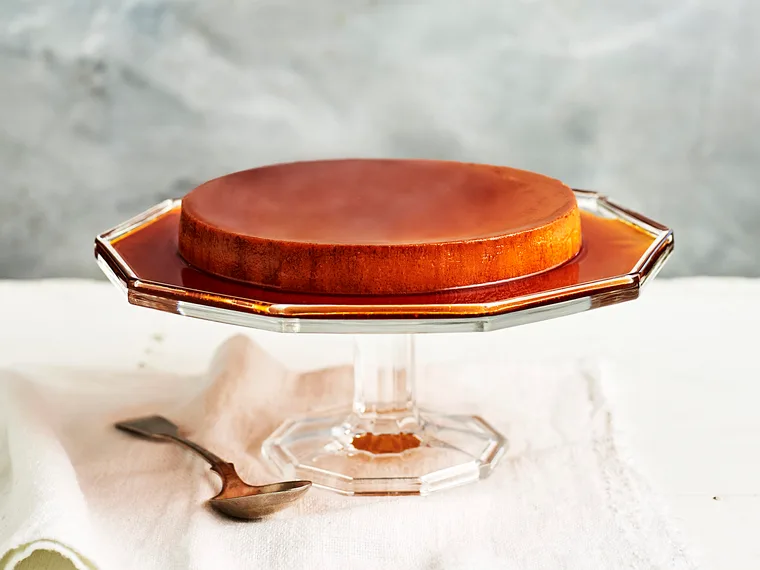
The perfect crème caramel
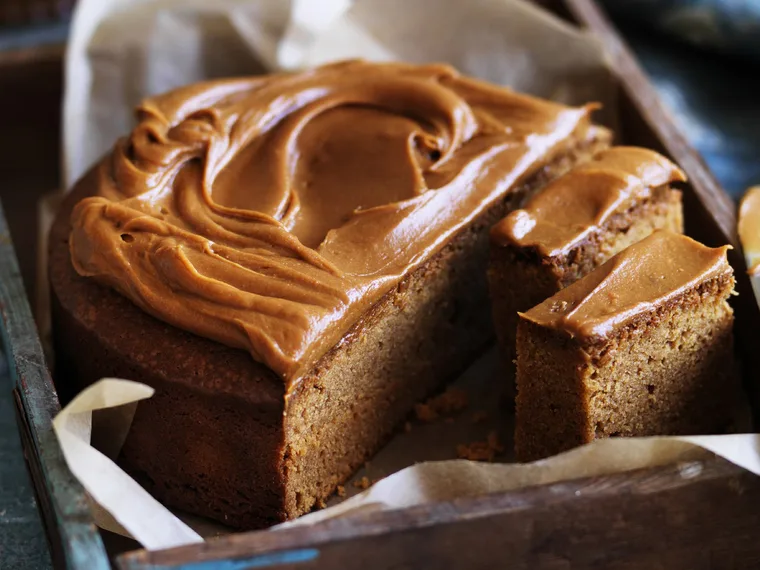
Triple-caramel mud cake
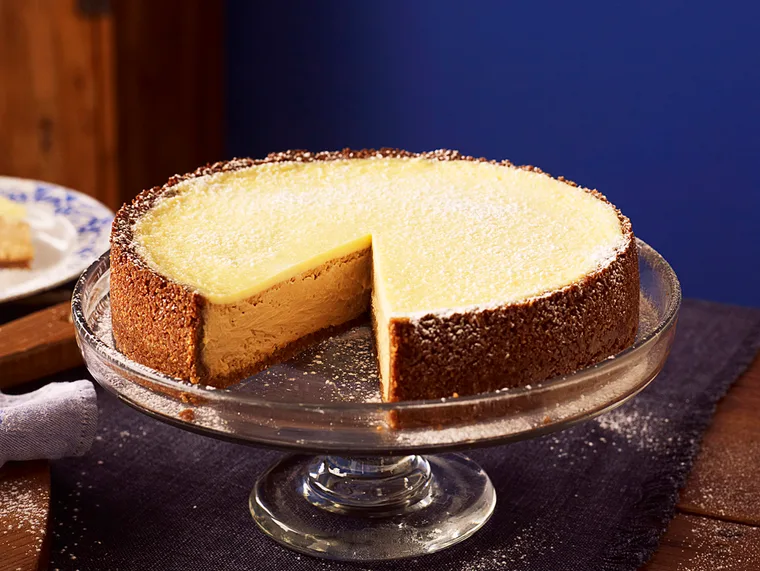
Baked caramel cheesecake
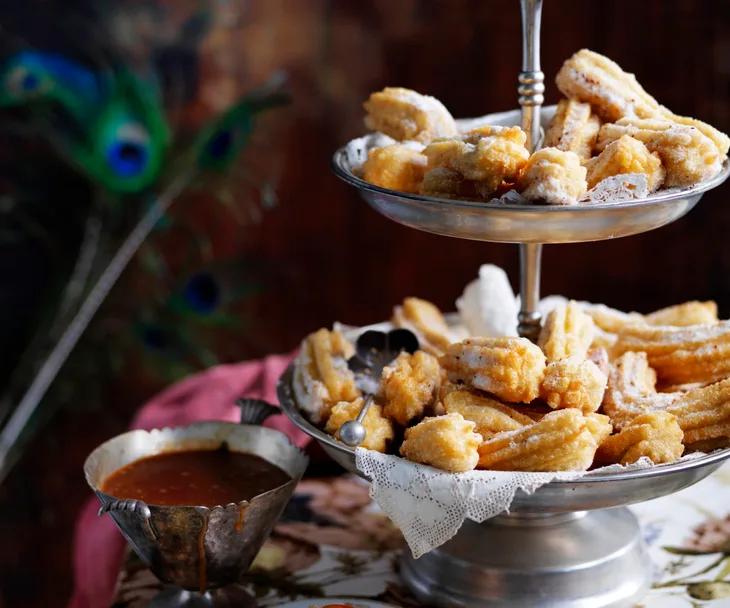
Churros with chilli sugar & caramel sauce
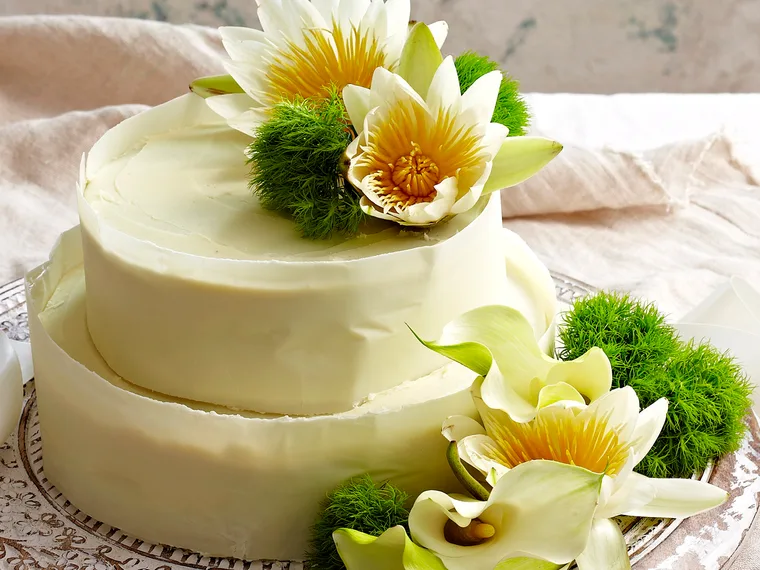
Caramel mud cake
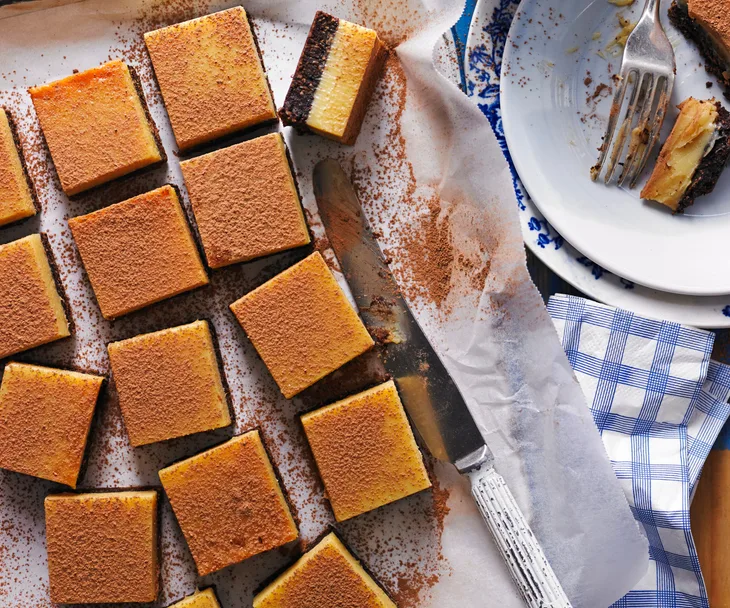
Double caramel slice
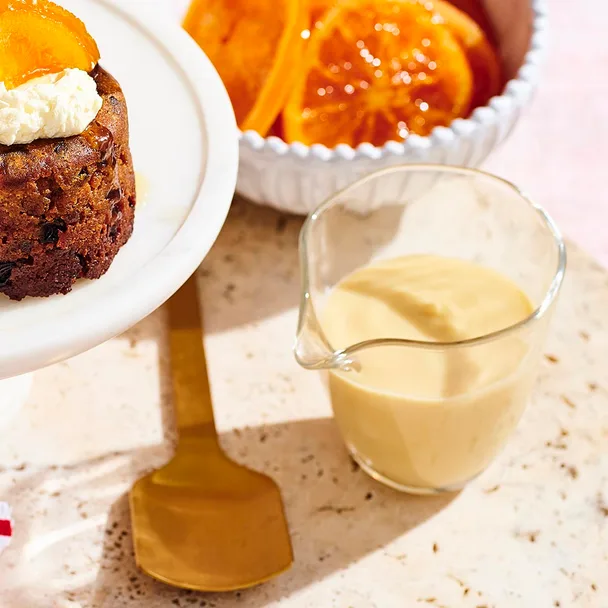
Caramel brandy sauce
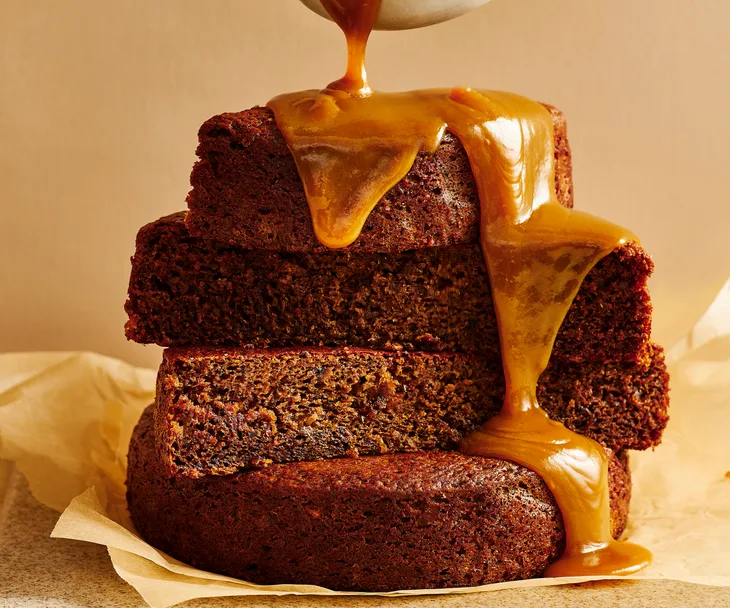
Sticky date pudding with miso caramel sauce
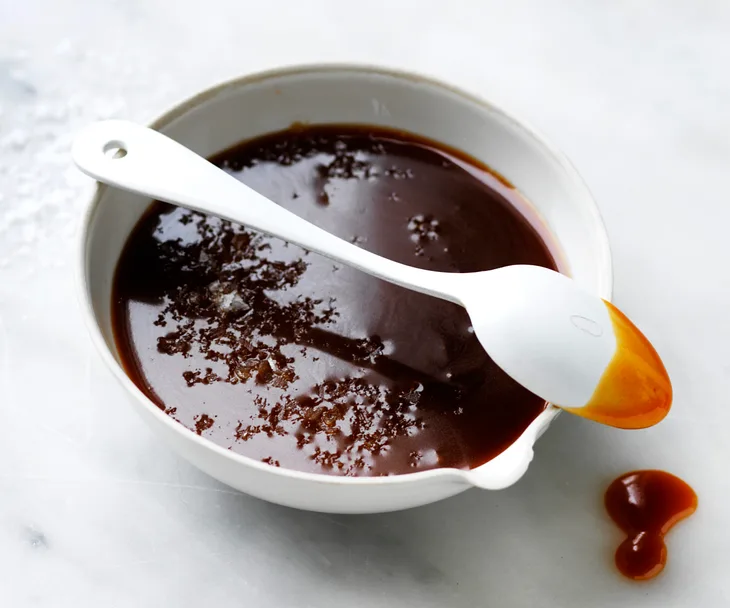
Rich caramel sauce
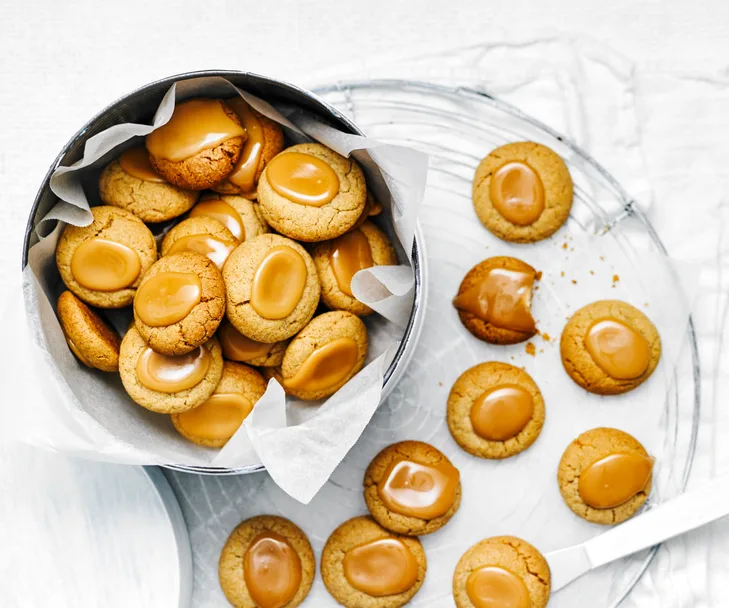
Caramel ginger crunchies

White chocolate caramel slice
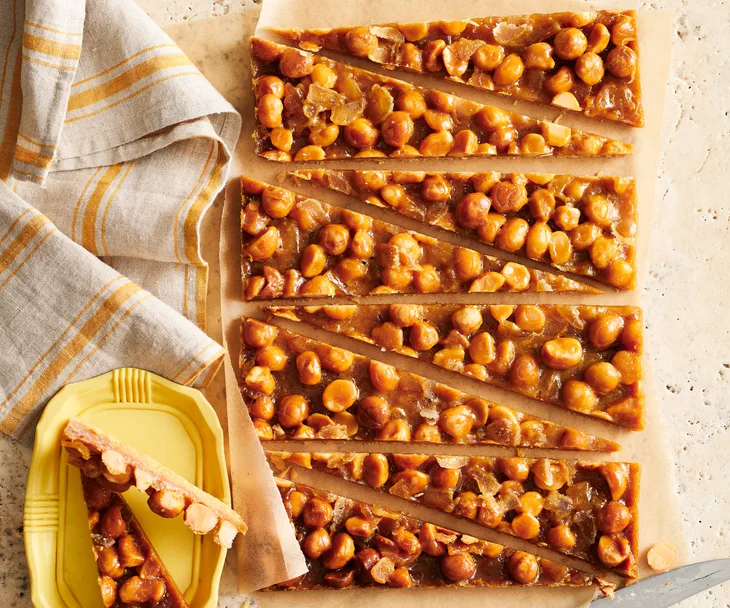
Macadamia, ginger and caramel slice

Caramel slice
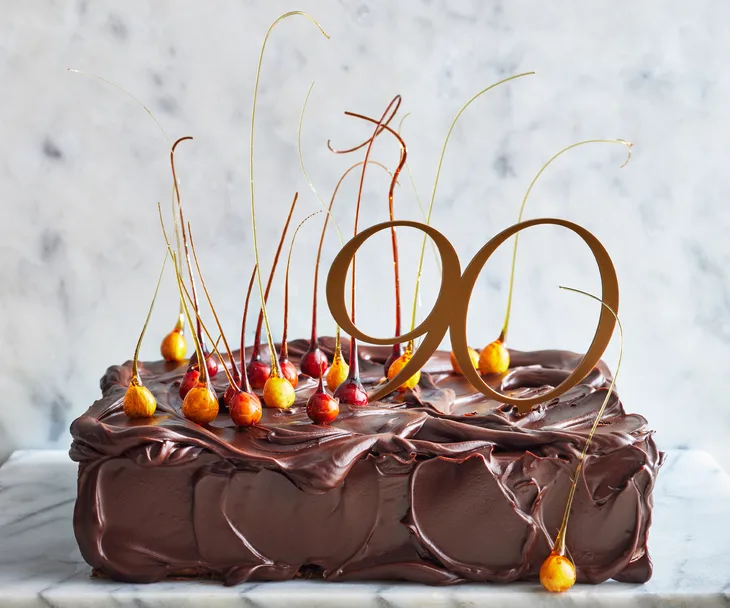
Choc-hazelnut caramel cake
